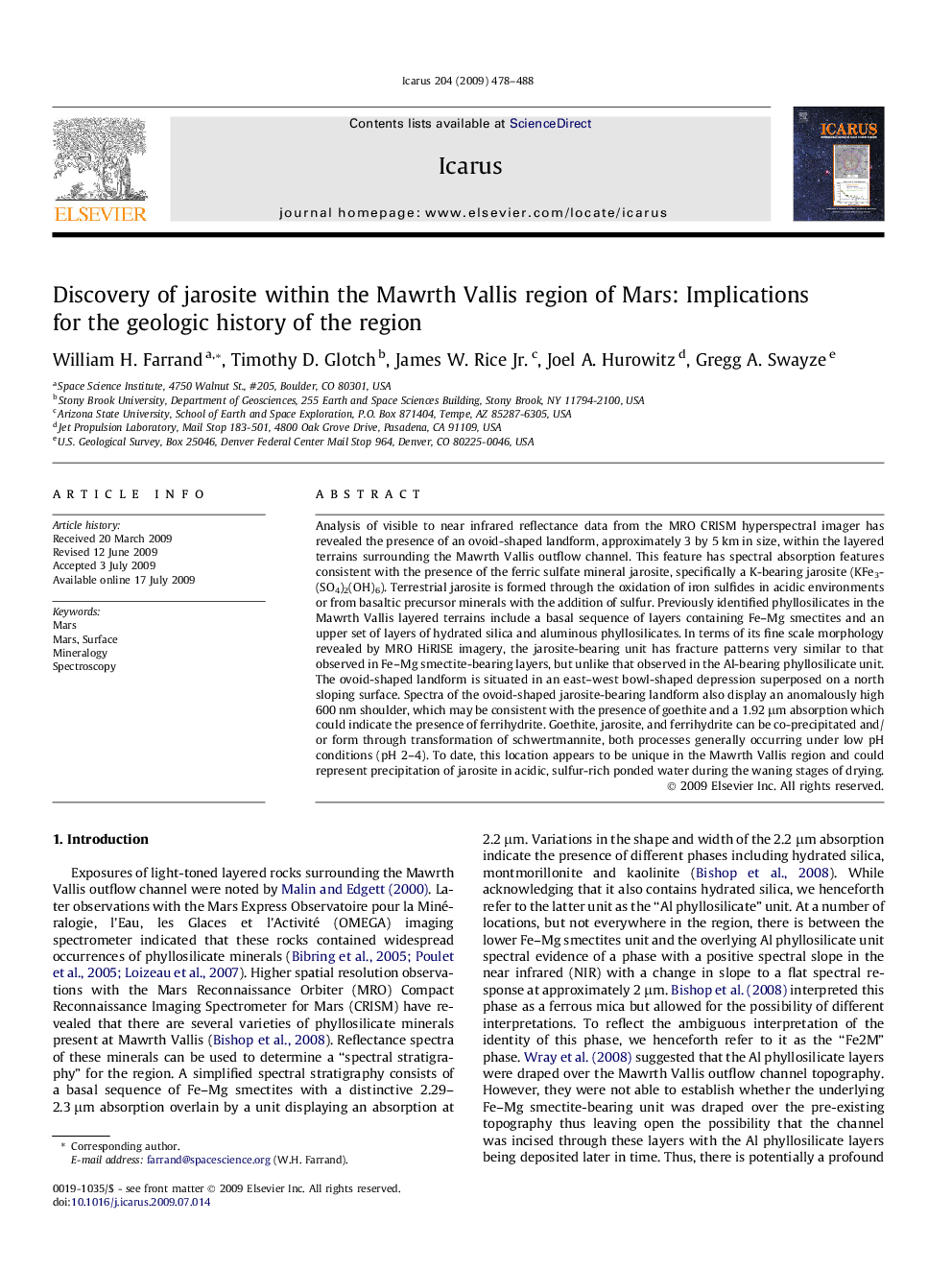| Article ID | Journal | Published Year | Pages | File Type |
|---|---|---|---|---|
| 1774748 | Icarus | 2009 | 11 Pages |
Analysis of visible to near infrared reflectance data from the MRO CRISM hyperspectral imager has revealed the presence of an ovoid-shaped landform, approximately 3 by 5 km in size, within the layered terrains surrounding the Mawrth Vallis outflow channel. This feature has spectral absorption features consistent with the presence of the ferric sulfate mineral jarosite, specifically a K-bearing jarosite (KFe3(SO4)2(OH)6). Terrestrial jarosite is formed through the oxidation of iron sulfides in acidic environments or from basaltic precursor minerals with the addition of sulfur. Previously identified phyllosilicates in the Mawrth Vallis layered terrains include a basal sequence of layers containing Fe–Mg smectites and an upper set of layers of hydrated silica and aluminous phyllosilicates. In terms of its fine scale morphology revealed by MRO HiRISE imagery, the jarosite-bearing unit has fracture patterns very similar to that observed in Fe–Mg smectite-bearing layers, but unlike that observed in the Al-bearing phyllosilicate unit. The ovoid-shaped landform is situated in an east–west bowl-shaped depression superposed on a north sloping surface. Spectra of the ovoid-shaped jarosite-bearing landform also display an anomalously high 600 nm shoulder, which may be consistent with the presence of goethite and a 1.92 μm absorption which could indicate the presence of ferrihydrite. Goethite, jarosite, and ferrihydrite can be co-precipitated and/or form through transformation of schwertmannite, both processes generally occurring under low pH conditions (pH 2–4). To date, this location appears to be unique in the Mawrth Vallis region and could represent precipitation of jarosite in acidic, sulfur-rich ponded water during the waning stages of drying.
